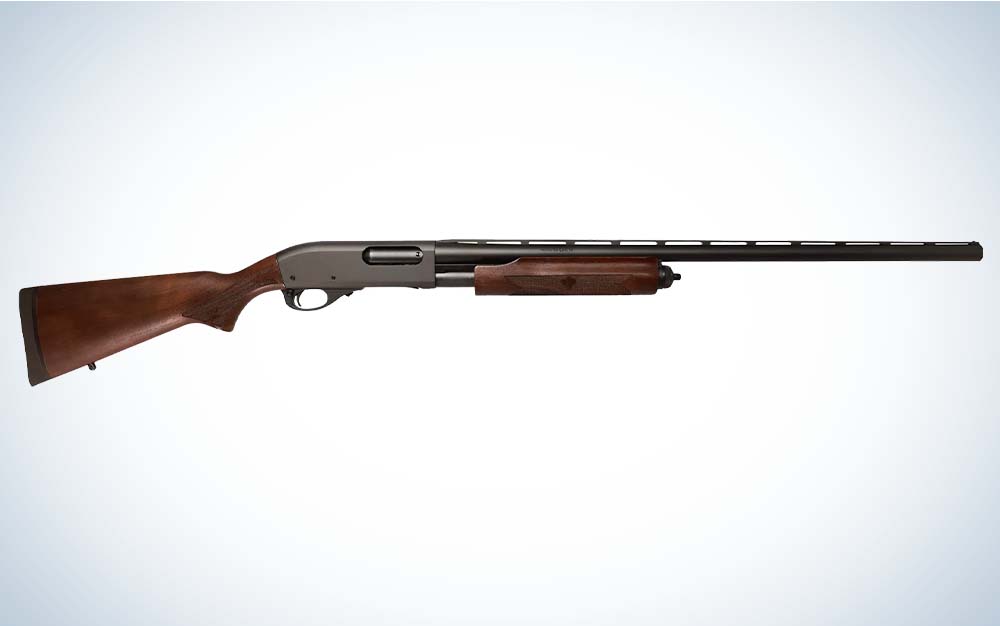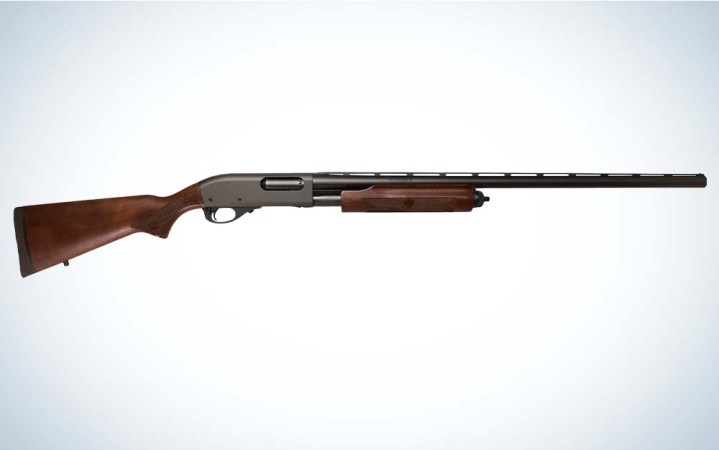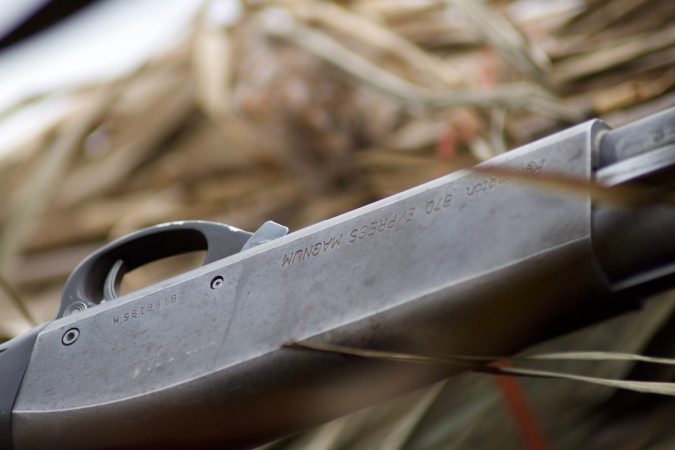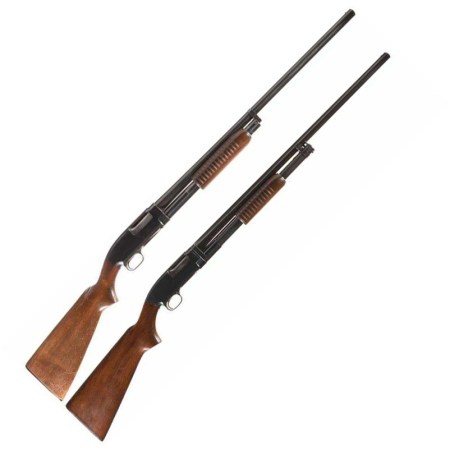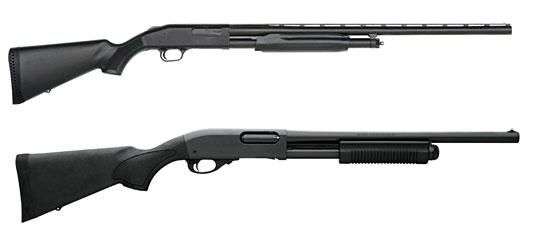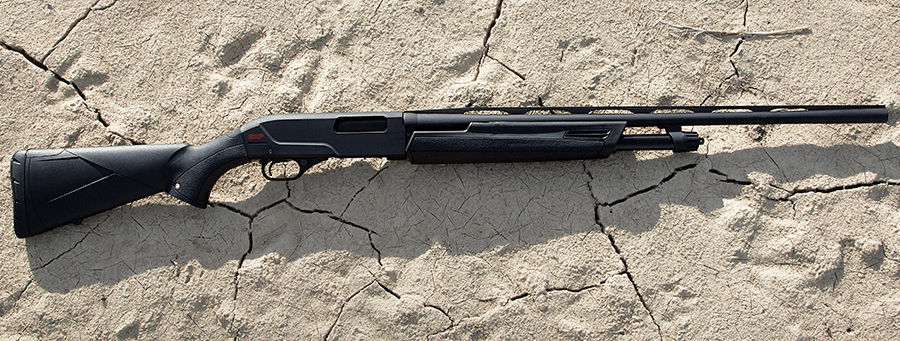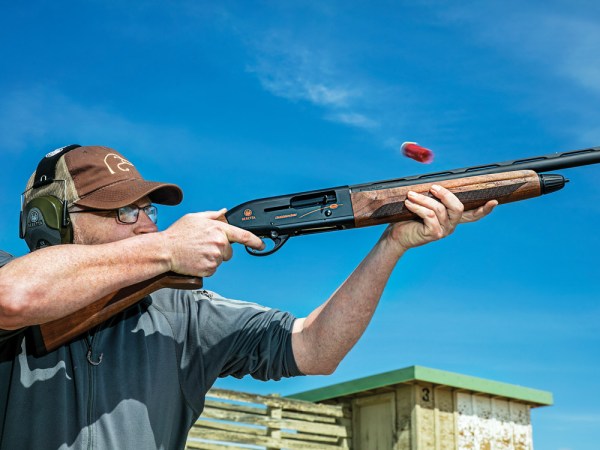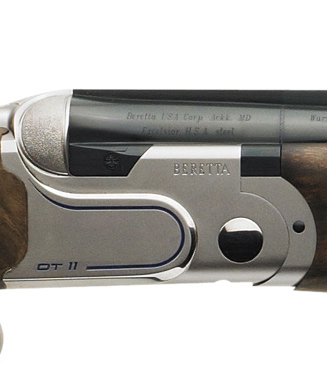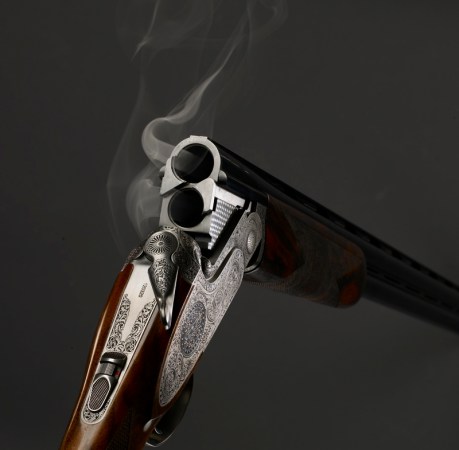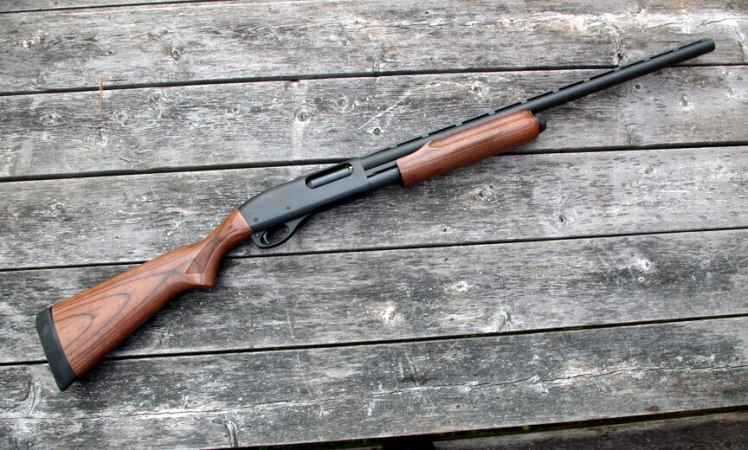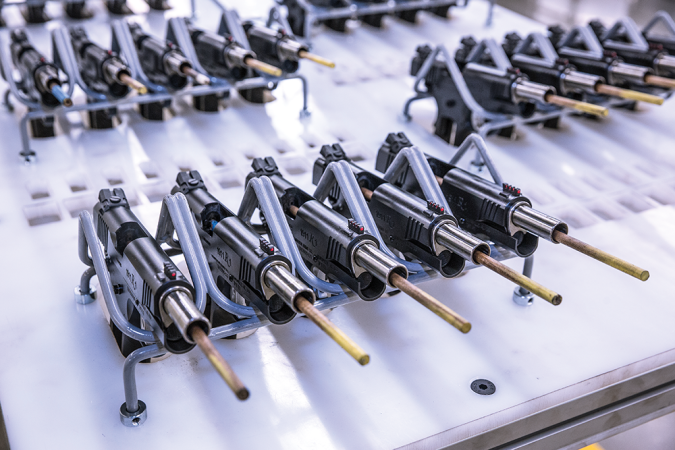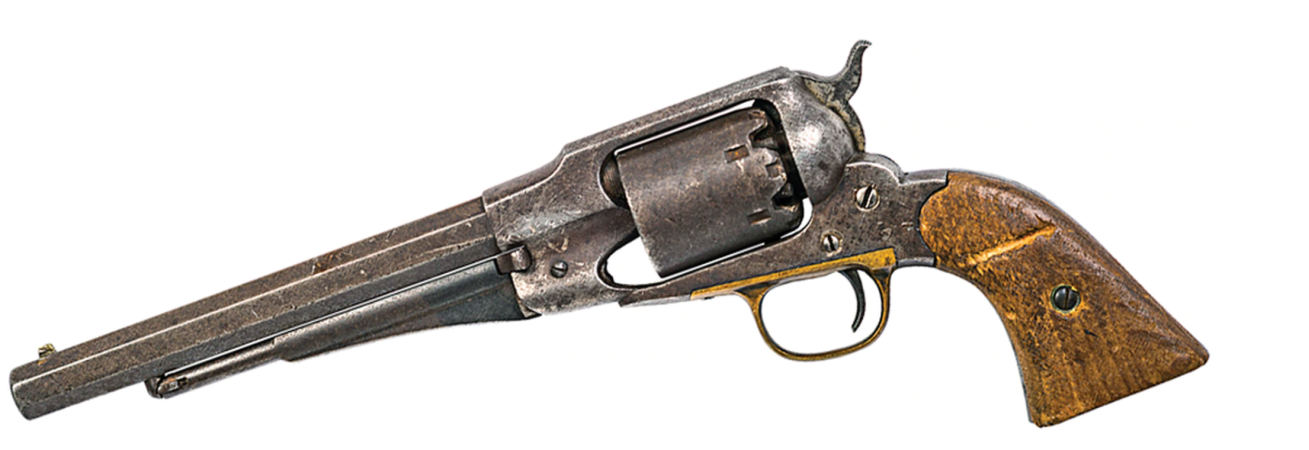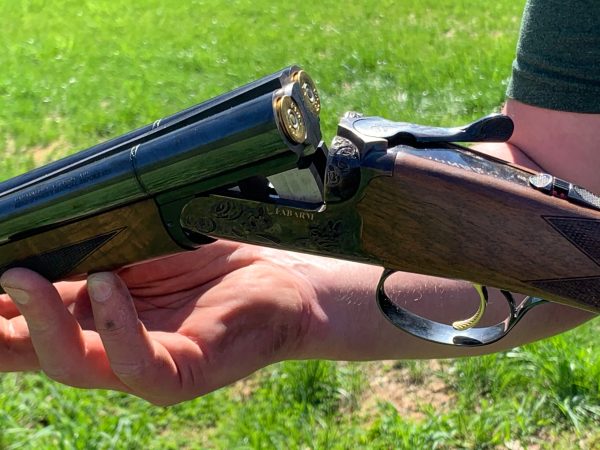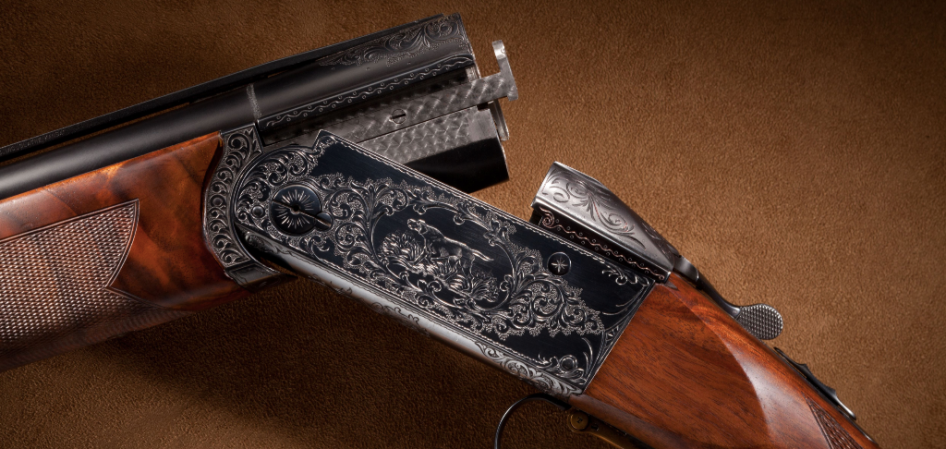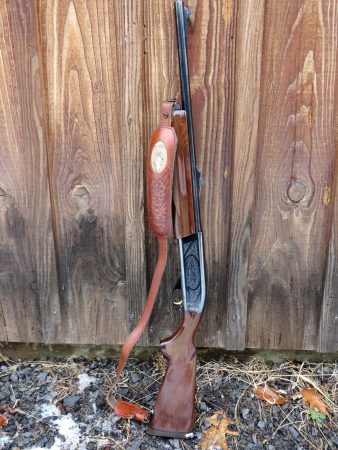We may earn revenue from the products available on this page and participate in affiliate programs. Learn More ›
One of the most popular pump shotguns in America is being replaced this year by the Remington 870 Fieldmaster. RemArms, the company that bought the firearm branch of Remington in 2020, is taking the 870 Express out of production in favor of the upgraded Fieldmaster. More than 11 million 870s (including Wingmasters, which debuted in 1950) have been sold over the last seven decades, but in recent years the Express suffered from poor quality control under previous ownership. It’s no secret that 870 Express guns were not what they used to be.
When I spoke to RemArms, they billed the Fieldmaster—offered in 12- and 20-gauge—as a reasonably priced pump that is better engineered than the Express. Remington improved the metal prep and finish coat of the Fieldmaster for added rust resistance, put the action bars through a smoothing process so it’s easier to operate the pump, added a walnut stock and fore-end, drilled and tapped the receiver for an optic, and included a softer butt pad to mitigate recoil. There are also swivel studs for a sling, and the Fieldmaster comes with three chokes—improved cylinder, modified, and full.
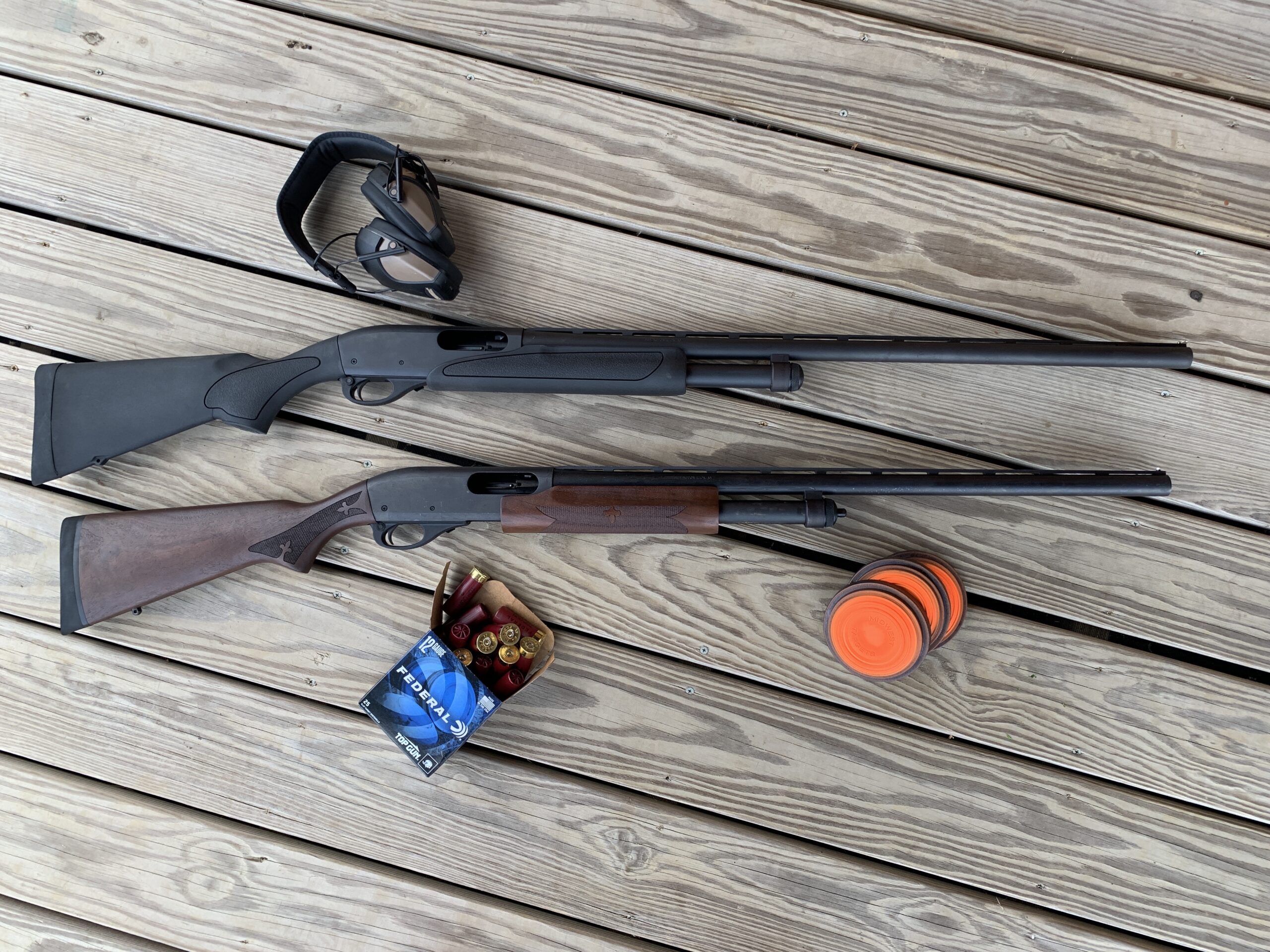
I recently purchased a 12-gauge Fieldmaster to see if it was indeed an improvement on the Express. Since the 870 is best known for accuracy, reliability, and toughness, I decided to put the Fieldmaster through an extensive torture test to find out if it was worth the $520 I paid for it.
Remington 870 FieldMaster Specifications
- Gauge: 20, 12 (tested)
- Action: Pump
- Capacity: 4+1 (2¾-inch shotshells)
- Chamber: 3½-inch, 3-inch (tested)
- Barrel type: Steel, vent-rib
- Barrel length: 28-, 26-inch (tested)
- Chokes: IC, M, F
- Front sight: White bead
- Length: 45½ inches (26-inch barrel)
- LOP: 14 inches
- Trigger pull: 4.5 pounds (three-pull avg.)
- Overall weight: 7.4 pounds
- MSRP: $600
The Fieldmaster vs. Express
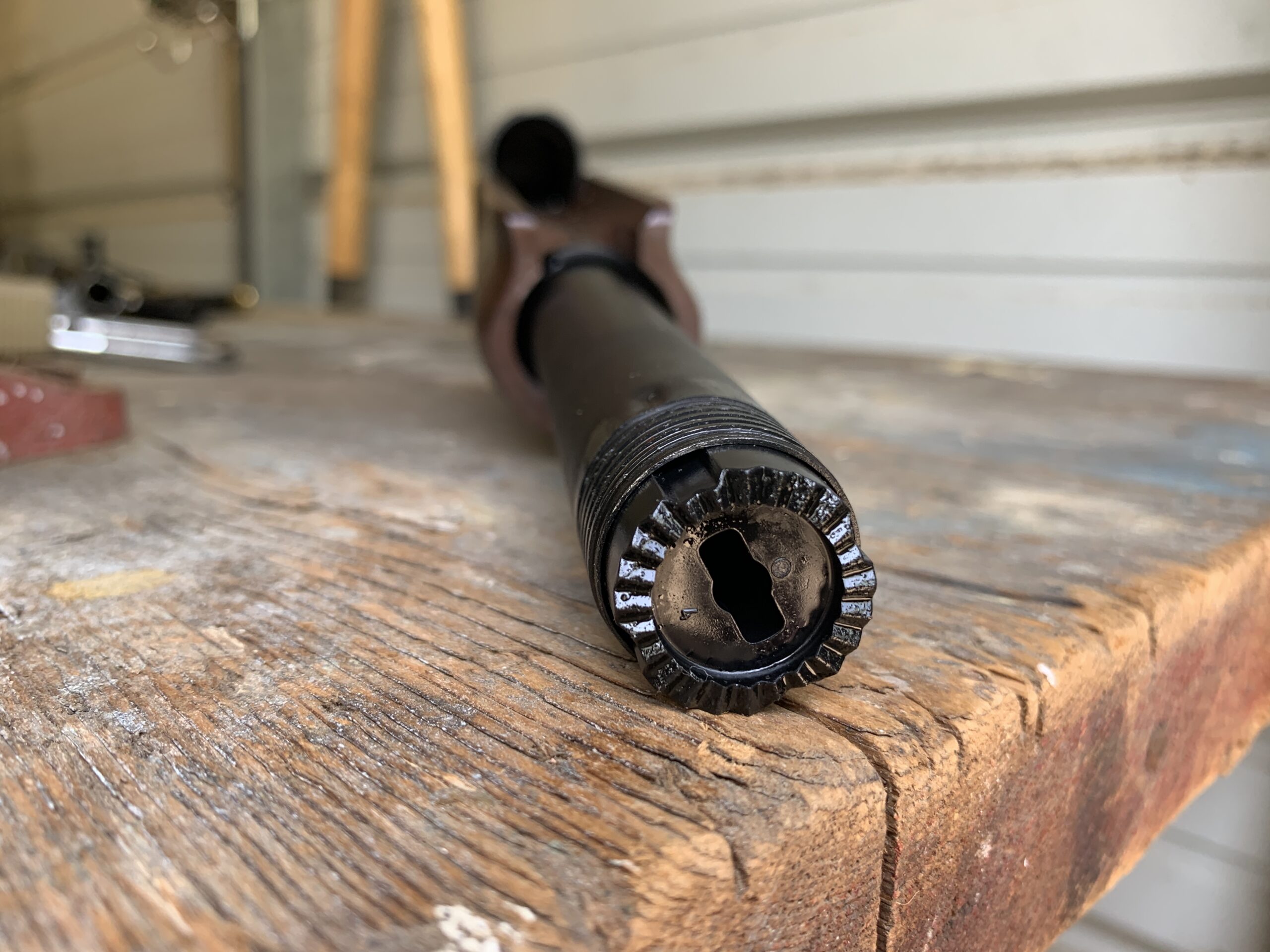
Remington launched the 870 Express—a more affordable version of the Wingmaster (which RemArms will continue to manufacture at its plant in Ilion, New York)—in 1987 to compete in a with other inexpensive slide-action repeaters. But the days of building dirt-cheap guns to sell at volume looks to be in the rearview for Remington. The new Fieldmaster has similar lines and handling of the Express, but it has some noticeable improvements. Those include:
- Drilled and tapped for and optic
- Softer recoil pad
- Three chokes (IC, M, F) instead of one (the Express came with a modified only)
- Smooth metal finishes inside the action, barrel and on the action bars
- Rust-resistant coating on all metal parts
- Turn-key magazine cap
- Swivel studs for a sling
- Walnut stock and fore-end
Fieldmaster Handling and Balance
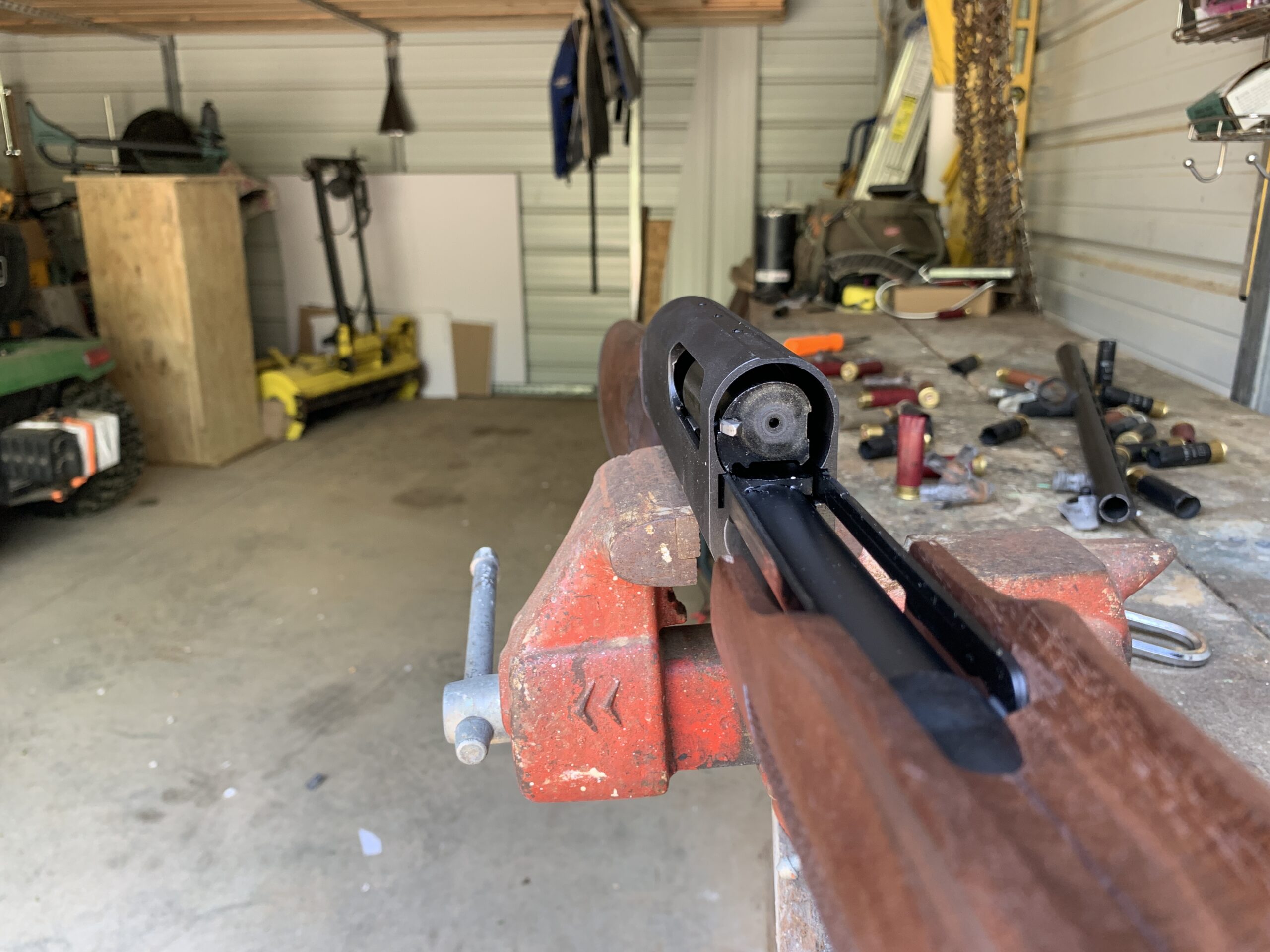
On the skeet and trap ranges, I found the 870 to be well balanced with the weight centered between my hands of the 7.4-pound gun. Typically, I break between 18 to 24 targets on skeet (I can never run it clean) and will occasionally drop a shot or two from the 16-yard line on trap. The 870 held that standard for me. I did notice that I was chipping clays on longer shots at trap and believe it was due to shooting an improved cylinder choke. My pattern work later revealed that the 870 put more pellets inside the 30-inch circle at 30 yards with a modified choke than it did with an IC.
Remington is using a new process for smoothing the action bars, and I found the action easy to work. A clunky bar system can make it more difficult to get an accurate second shot off. If there is any stiffness that may cause you to drop the barrel when you slide the fore-end backward to eject the first round, and you will have to find the target again and make an adjustment to kill the second bird. I was able to stay on the clay bird shooting doubles on skeet, and the 3½-inch travel of the fore-end was short enough to fire the second shot quickly.
There are no shims or spacers included with the Fieldmaster. But 870s have a history of fitting most shooters well enough. The length of pull (14 inches) was short for me, but I still managed to shoot the Fieldmaster like it was a shotgun that had been in my gun closet for decades. And, if you need more length in the stock, there are an assortment of aftermarket recoil pads available.
Fieldmaster Fit and Finish
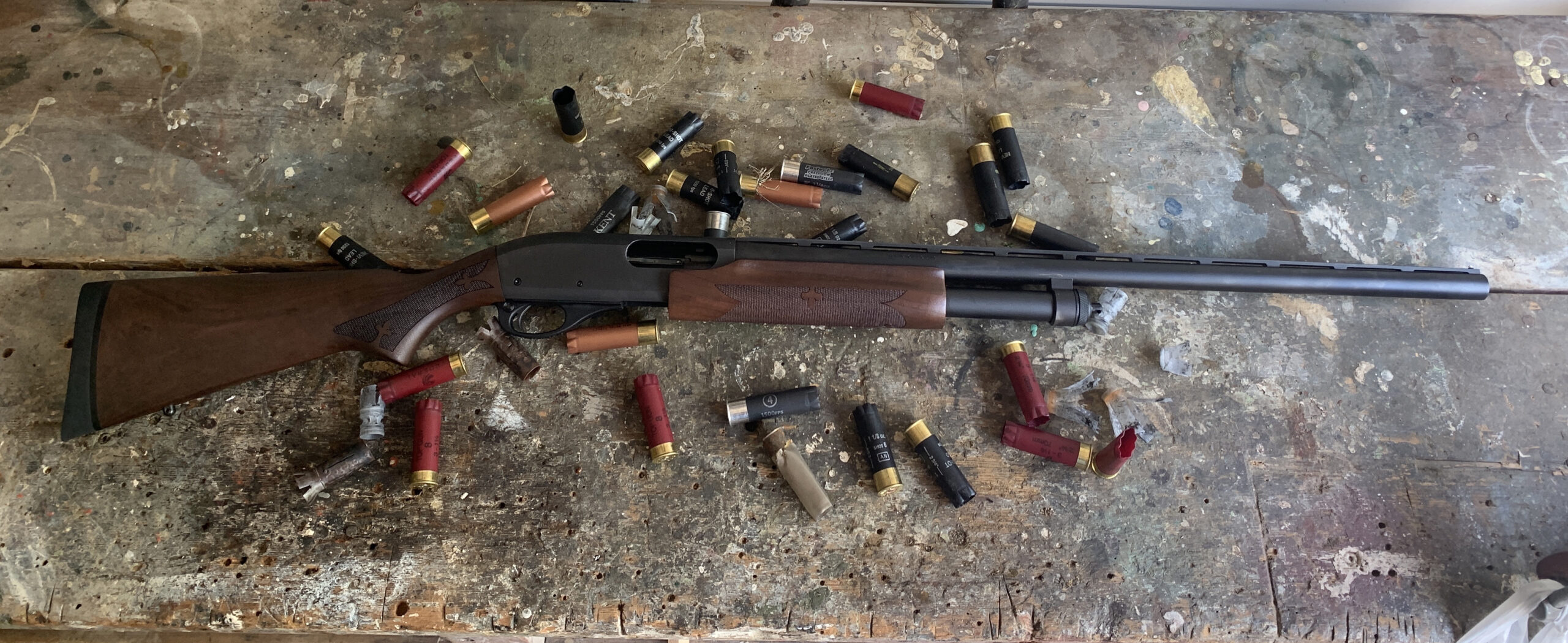
Remington’s decision to put a walnut stock and fore-end on the Fieldmaster was a good one. It’s not often you find a modern repeater that costs just over $500 with premium wooden furniture. The fleur-de-lis checkering is stamped and offers a solid grip even when the wood gets wet, plus there is a channel on either side of the fore-end to rest your fingers in and give you a better hold on the 870. The matte finish on the receiver and barrel is sufficient, but not as hardy as the impenetrable “bowling pin” finish on the Remington 1100. I purposely dropped the gun on our gravel driveway twice during the torture test and it did nick the steel and wood. But that’s going to happen with most shotguns if you are careless with them.
I didn’t find any obtrusive transitions from wood to steel with the Fieldmaster. Typically, where the stock meets the receiver is a place you can find poor machine work, but not on the 870 I tested. There was a very small gap between the ventilated rib of the barrel and the action.
The Fieldmaster is drilled and tapped for an optic, which was not offered in the Wingmaster or Express. If you wanted to mount a scope or red dot on those pumps, you had to buy an aftermarket rail system that fit over the top of the receiver (like a hood) and was held in place by removing the trigger group pins and sliding in new ones. Or, you could have a gunsmith drill the holes for you. Now, you only need a flathead screwdriver and a Picatinny rail.
An Inside Look at the Fieldmaster
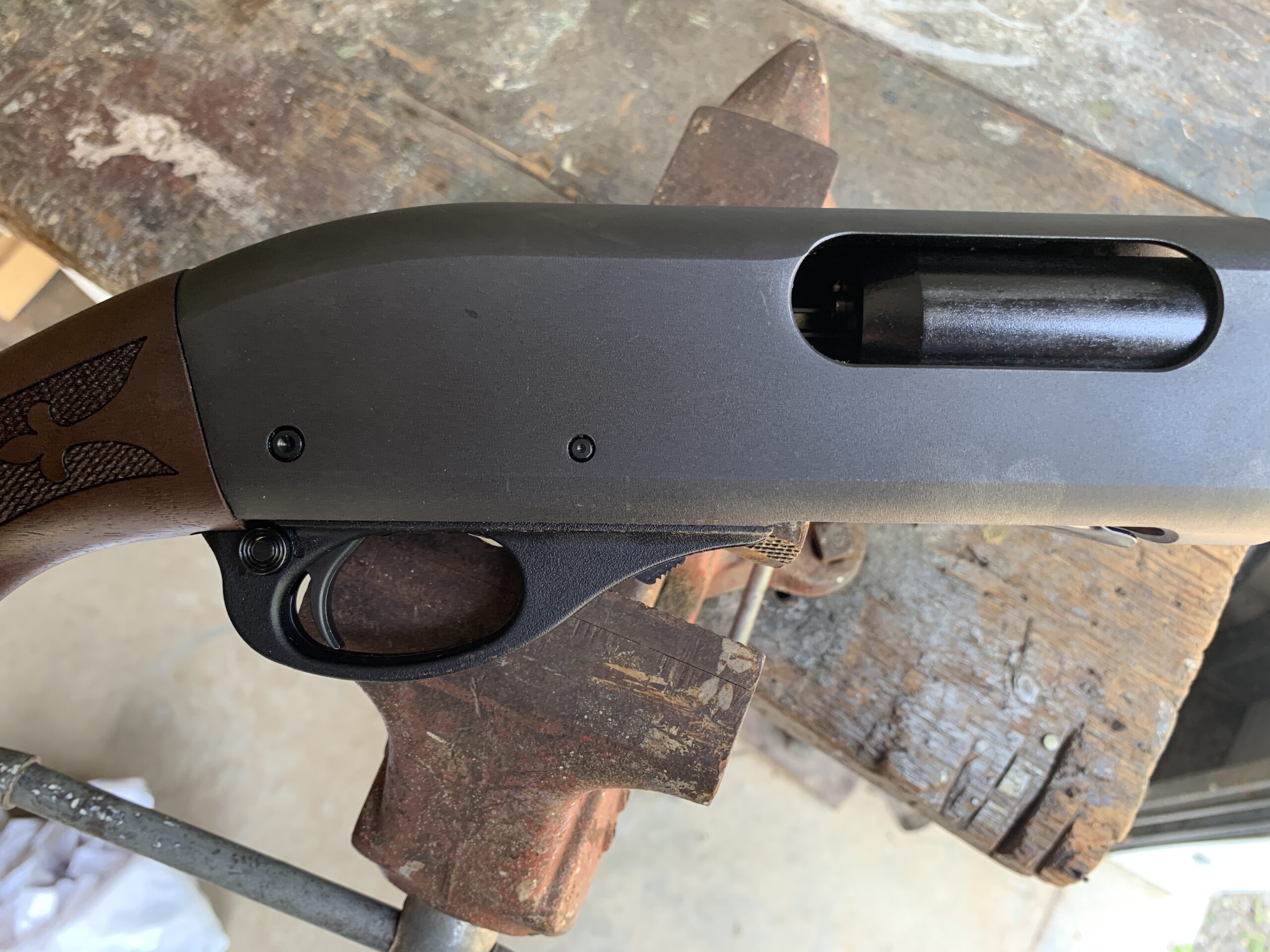
At 4½ pounds, the trigger pull of the 870 was light (in a good way) for an affordable pump. The trigger group is plastic, but that’s common in today’s repeaters, and I found it easy to drop out and re-insert. Remington did update the magazine cap to a turn-key system found on some modern Browning shotguns. All you need is a house or car key (I use a flathead screwdriver), insert, push down, twist, and the magazine spring will come out with the cap. Just be sure to keep pressure on the spring as you slide it out or it will go flying from the magazine tube.
The Fieldmaster has the same action as the Express, it’s just smoother. There were no metal burrs in the receiver or noticeable rings inside the barrel of my test gun. The finishing process of the Express began to falter in the final years under the last Remington ownership group, which caused guns to malfunction. I can recall buddies scrubbing the inside of their new 870s with steel wool to slick up the metal of the action so the gun cycled better. The Fieldmaster finish is vastly improved and will not require any polishing.
How the Fieldmaster Patterned
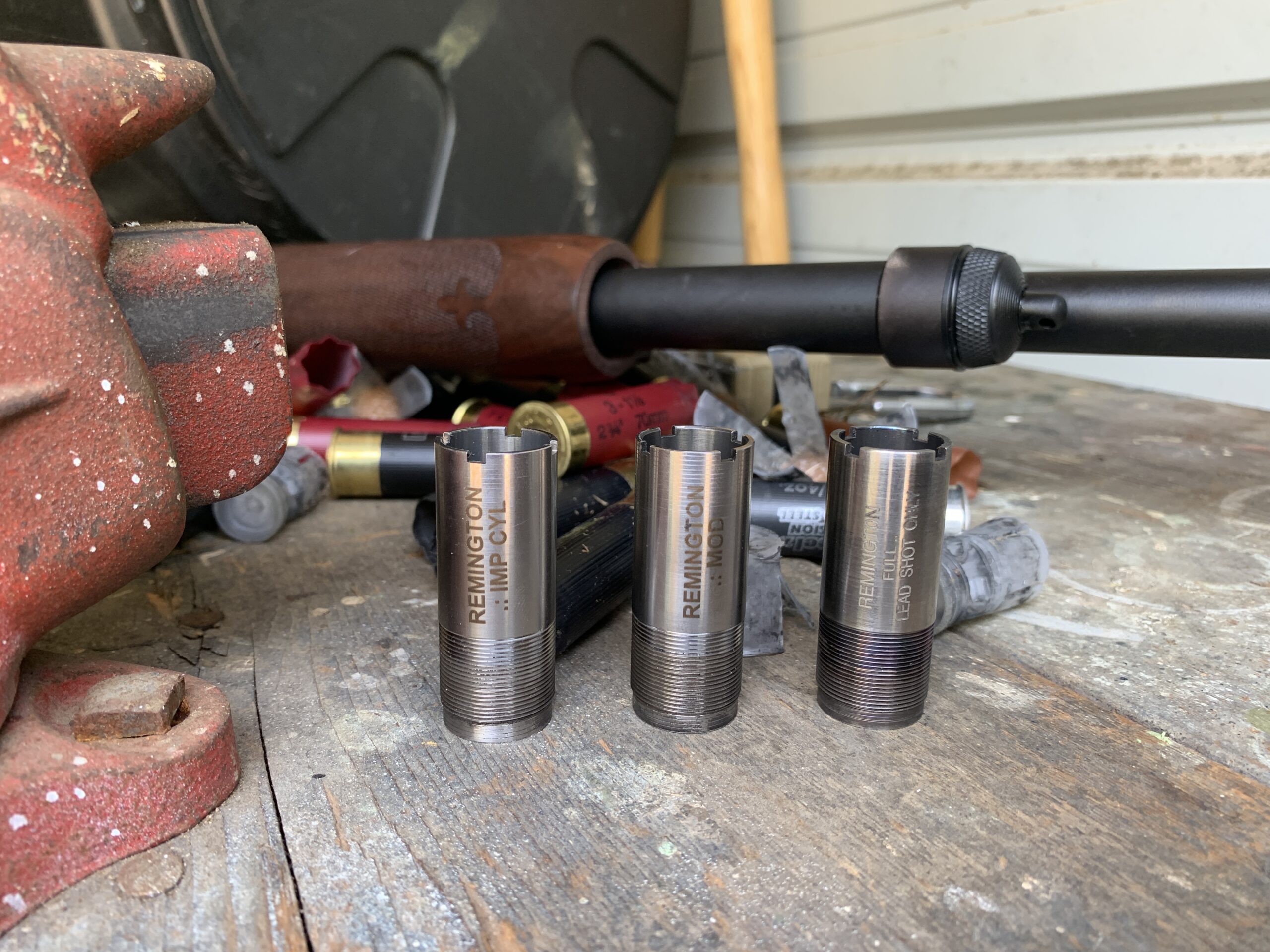
Hunters and shooters bought the 870 Wingmaster and Express because they were accurate, all-purpose guns. You could shoot clays, ducks, turkeys, pheasants, deer, and defend your home with either gun. So, the Fieldmaster had a lot to live up to in terms of pattern performance, which it did in my testing.
Since the 870 is a do-all gun, I patterned it at 21 yards (where the clay crosses the centerline in skeet) with an IC choke, 30 yards (an average trap shot) with a modified choke, and patterned two waterfowl loads, a pheasant load, plus a turkey shotshell. All patterns were measured inside a 30-inch circle, except for the turkey ammo, which was measured inside a 10-inch circle. I shot each load 10 times from a standing position—I sat on the ground and shot five times for the turkey load test—and averaged the pellet strikes inside the circle. I patterned the 870 on an 80-degree day with a 10 to 15 mph headwind. The table below shows the results of the pattern tests.

Overall, the 870 threw some fantastic patterns, performing best with a 2¾-inch 1 1/8-ounce No. 6 lead load that produced a 79 percent pattern through a full choke. The Fieldmaster was also adept at patterning steel, delivering a 73 percent pattern with 3-inch 1¼-ounce No. 4s through a modified choke at 40 yards. I did find that 870 consistently impacted right of my point-of-aim with every load I shot from 30 yards and beyond through modified and full chokes. That could be due to gun fit, my shooting style, load-choke combination, or bit of all three.
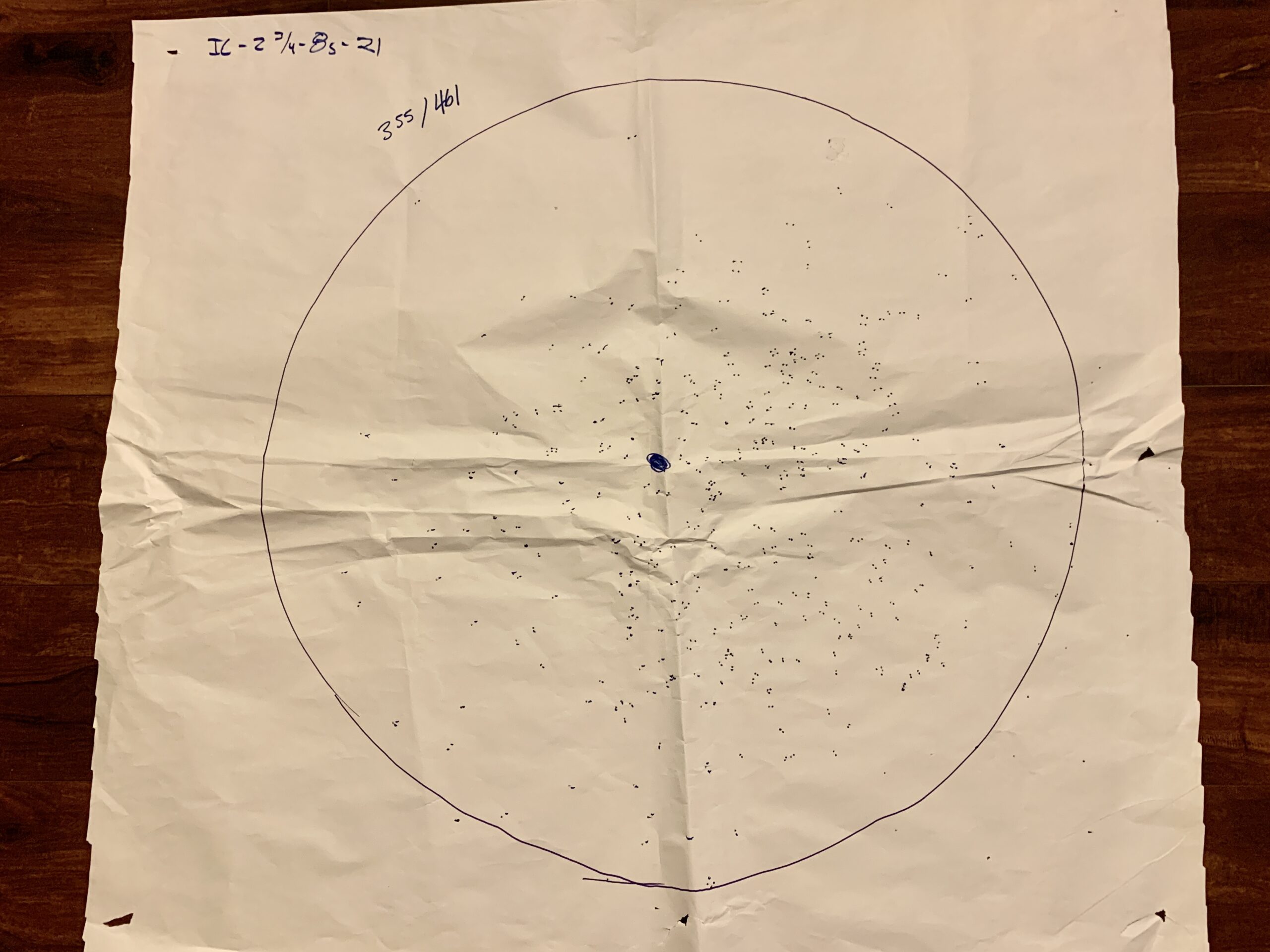

Using the stock full choke, I could not get consistent point of impact results at 40 yards with Hevi-Metal Turkey, an affordable 3-inch 1¼-ounce steel and Hevi-Shot stacked payload that has a similar pellet count (263) of a 2-ounce lead No. 4. The 46-pellet pattern average was enough to kill a gobbler, but the POI was too scattered. This is no slight against the 870. It’s clearly capable of delivering solid patterns. Some guns and shotshells were simply not meant for one another.
Torture Testing the 870 Fieldmaster
But here’s what everyone really wants to know about the new Fieldmaster: Will it run without fail? So, to start the torture test, I shot four rounds of skeet—100 shotshells—with the Fieldmaster, then moved to the trap field to shoot two rounds there. In total I shot 200 shells at the range, spending some extra time at a few of the skeet stations I struggle to break clays on consistently. The 870 didn’t fail, cycling through 2¾-inch, 1 1/8-ounce target loads without issue.
Next, I took the 870 to the pattern board and shot 55 more rounds through it. Again, no issues.
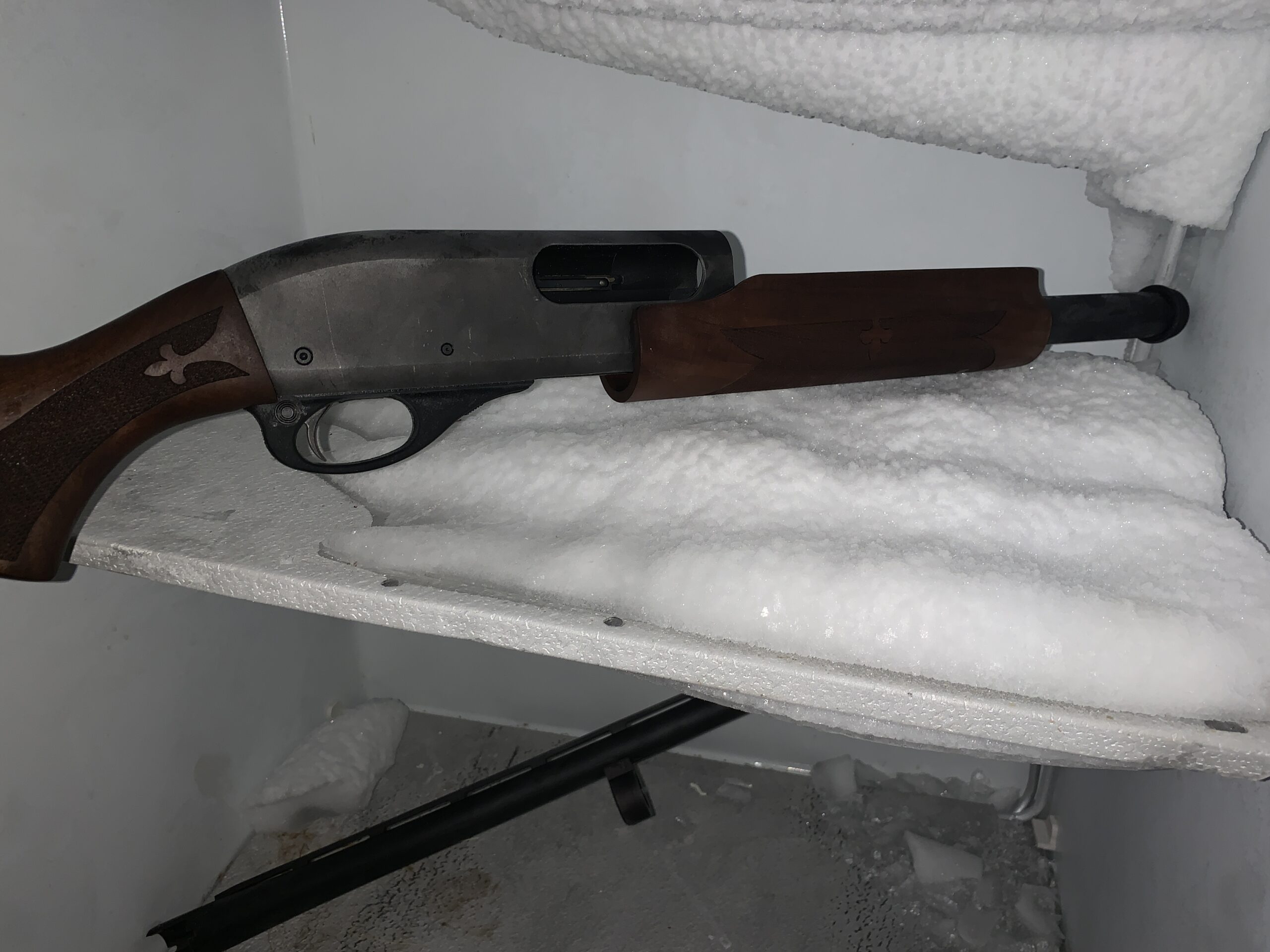
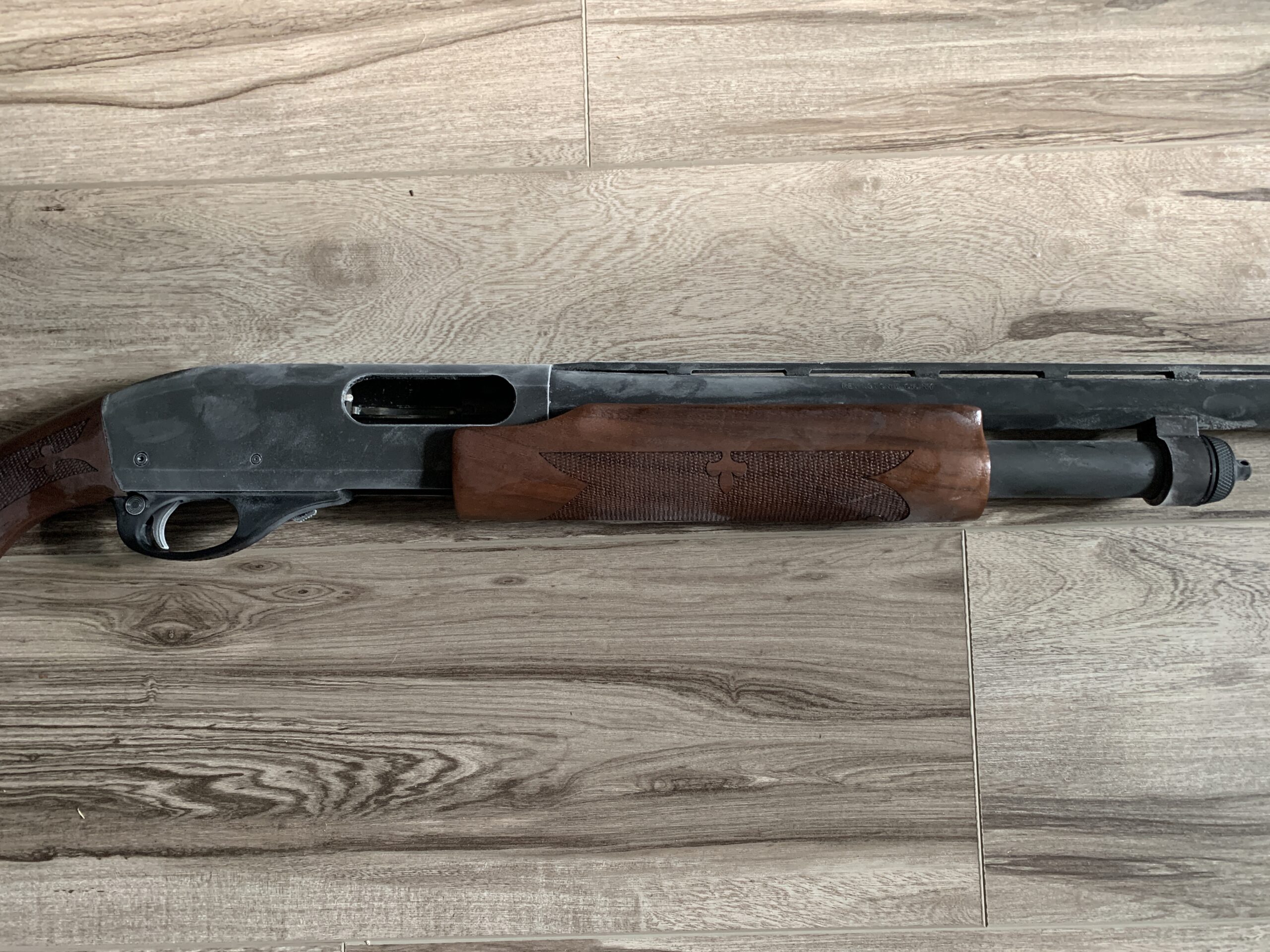
After that it was time to see if I could get the 870 to fail. I left the Fieldmaster in the freezer overnight, came back the following morning and shot a mix of 10 2¾- and 3-inch lead and steel loads through the 870. Then I waited 15 minutes for water droplets to form in the action as the Fieldmaster thawed and shot 10 more loads. The 870 did not fail in either scenario. In fact, I removed the plug to increase the magazine capacity (4+1 with 2¾-inch shells) to find out if the gun could cycle five shells—not just three—consecutively. Happily, there were no issues.
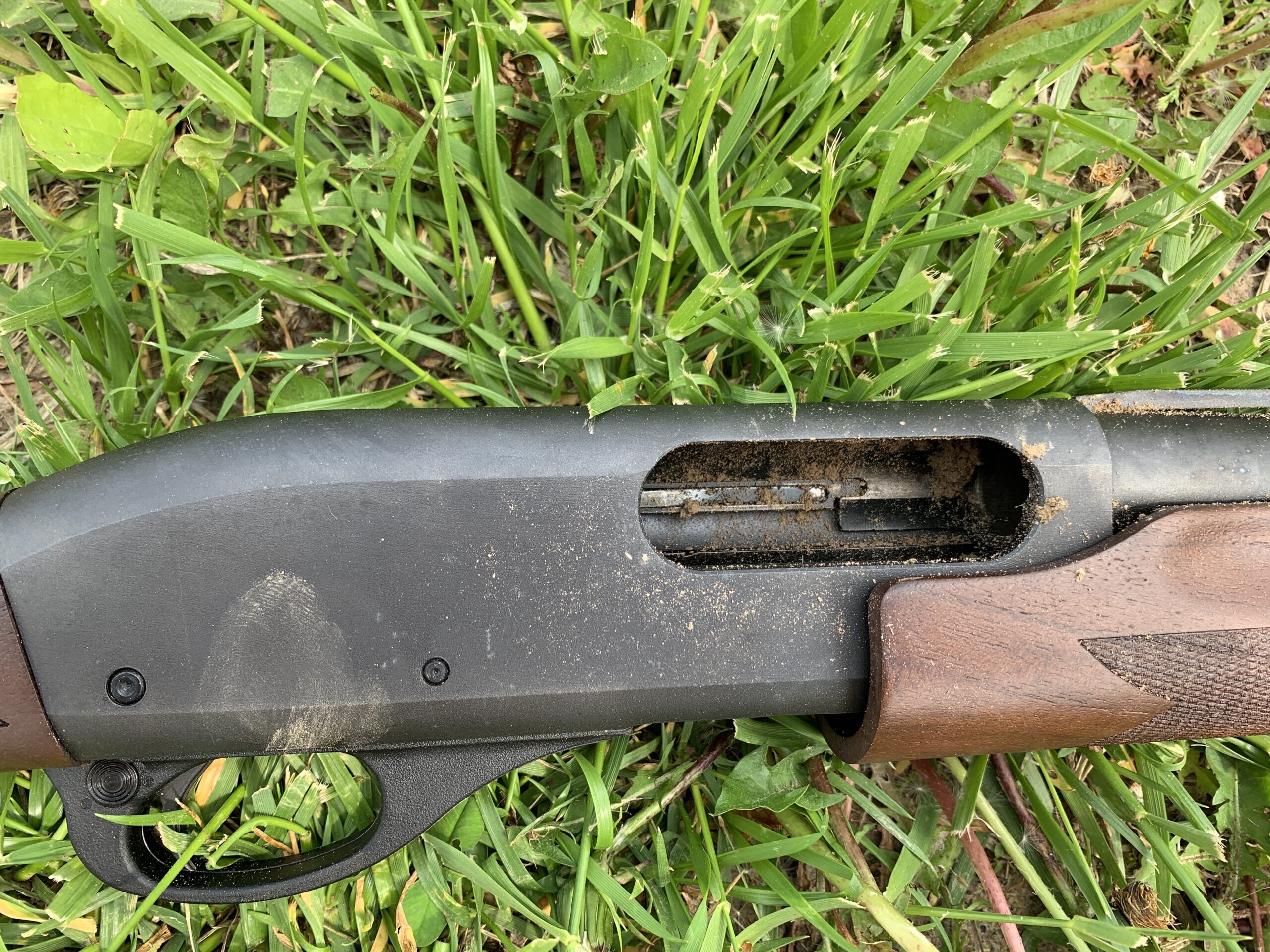
Most hunters have mistakenly dropped their unloaded guns on the ground a time or two. And duck hunters who use layout blinds or backboards to field hunt may lay their guns in the dirt beside them. Bottom line: when you’re in the field, a shotgun can get downright filthy. To replicate that, I grabbed a clod of dirt and threw it in the open action of the Fieldmaster. I dumped the excess dirt out—plenty remained in the action—and fired 10 shotshells. The action bars grinded inside the receiver as I worked the fore-end, but the 870 did not fail to perform.
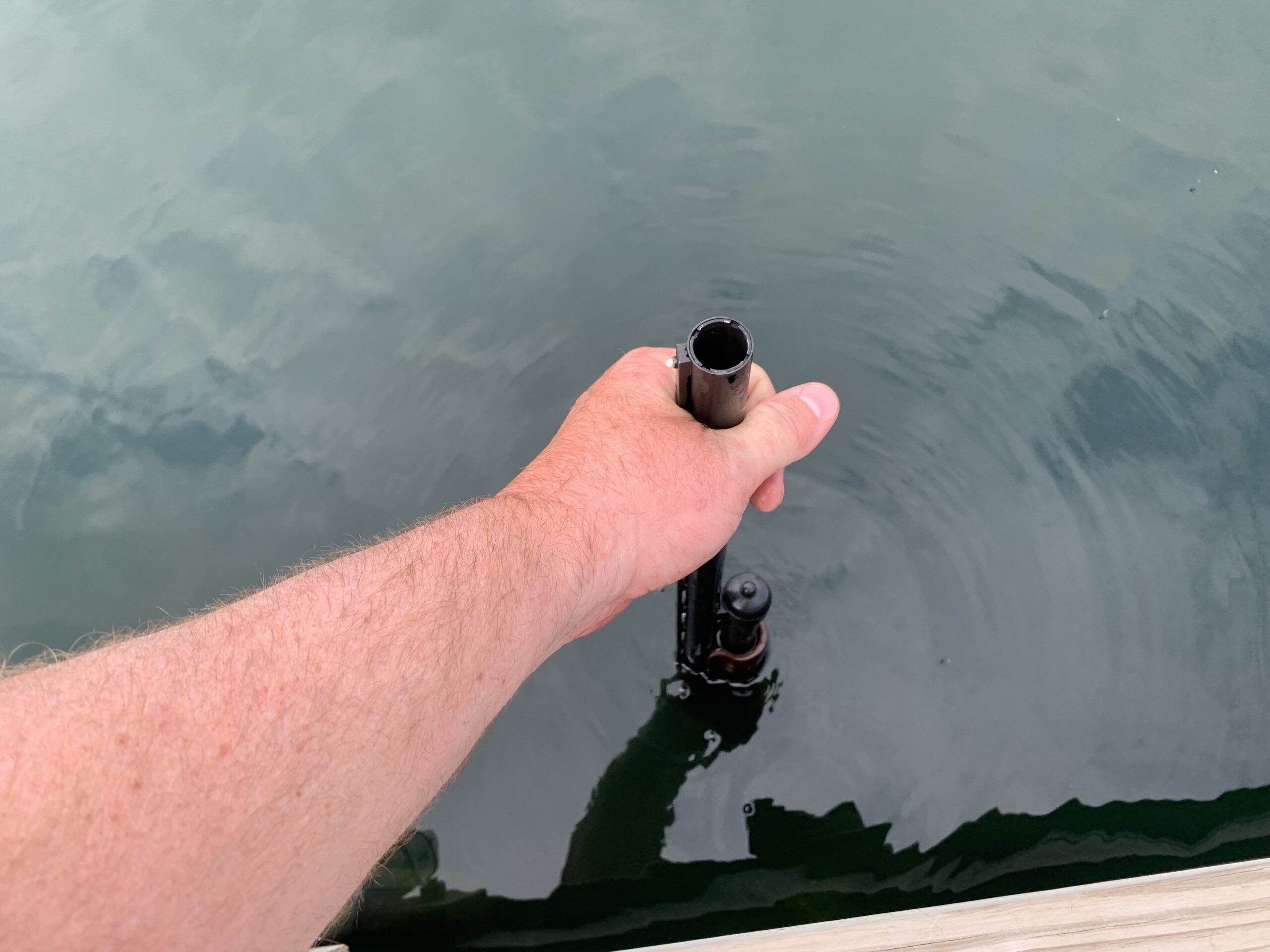
My next test was geared toward waterfowlers. Many of us have accidently dropped our guns in the water or snow on a hunt and we’ve all gotten them drenched in the rain. To replicate this, I completely submerged the unloaded Fieldmaster in a pond. Once I pulled it from the water and tipped it forward to drain, I loaded five shells into the 870 and fired them, without issue. Then I loaded five more. After the first shot, the Fieldmaster would not cycle. I believe a small pebble lodged itself in the action or enough mud formed on the action bars after I dipped it in the lake to prevent me from operating the gun. Whichever it was, I could not move the fore-end whatsoever after the first shot.
It was a simple fix to get the gun up and running again. I unscrewed the fore-end cap, pulled out the barrel, and removed the fore-end, action bars, and two-piece bolt from the 870. The action bars slid out by pressing down on two steel latches located inside the receiver just above the load gate. After wiping down the fore-end, action bars, magazine tube, bolt, and the action, I reassembled the gun. To insert the bolt, you must align the action bars on slots inside the receiver and press the same two steel latches required for removal. It’s much easier to do this if you drop the trigger group by tapping out the two steel pins that hold it in place.
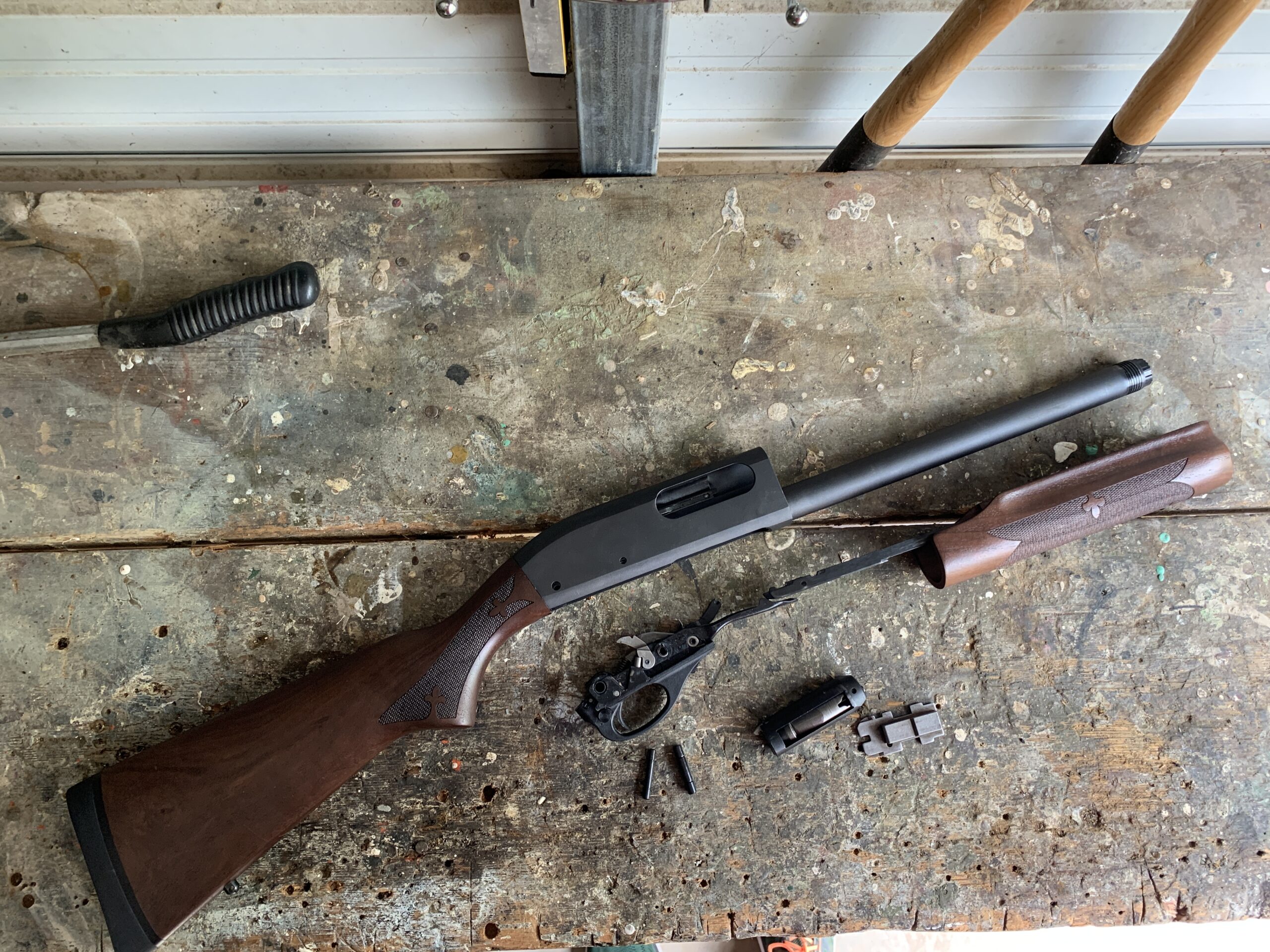
Once I had the gun cleaned and reassembled—it took about 10 minutes—I shot 10 more rounds through the 870 and it ran wonderfully. Problem solved.
To finish the test, I shot the 870 from the hip three times to make sure it fired (it did) and attempted to slam fire it (it didn’t). Many older pumps did not require a trigger reset like the Fieldmaster has. That allowed shooters to pull the trigger one time, keep it depressed, pump the action, and fire shells until the magazine tube was empty. It was an unsafe practice, and modern pumps—such as the Fieldmaster—will not slam fire.
Read Next: The 28 Most Notable Guns from Remington’s 200-Year History
Final Thoughts
RemArms did a fine job giving shooters more for their dollar with the 870 Fieldmaster. The machine work, and smoothness of the metal inside the action and barrel, and the action bars themselves was enough to vault the Fieldmaster ahead of the Express. And in this modern era of shotguns, it’s unheard of to offer an affordable repeater with a walnut stock and fore-end. Most are made with flimsy hardwood or a composite material. The Fieldmaster also hit the mark on the pattern board, delivering the superior downrange performance we’re accustomed to seeing from the 870 platform. It also proved itself as a durable pump-action during the torture test. Even when it failed, I only needed to field strip it and perform a quick cleaning to get it operating again.
There’s still plenty of uncertainty around RemArms and the future of Remington firearms. Will the Fieldmaster become a worthy heir of the 870 legacy? It’s far too early to tell, but the model I reviewed ran reliably, patterned well, and looked good while doing it (shotgun enthusiasts who love walnut and steel repeaters will enjoy shooting—and admiring—this gun). That should give Remington loyalists a reason to be hopeful.

